Madagascar jasmine (Stephanotis floribunda) has incredibly fragrant, white, star-shaped, waxy, tubular, trumpet-shaped flowers. It is also known as waxflower, Hawaiian wedding flower, and bridal wreath ... the clusters of flowers are often used as bouquets for new brides (1). The flowers yellow with age. It is a member of the Apocynaceae family of angiosperms and is native to Madagascar (1). This specimen was photographed by myself in the Dept. of Horticulture and Landscape Architecture greenhouse at Purdue University, West Lafayette, IN on February 26, 2019.
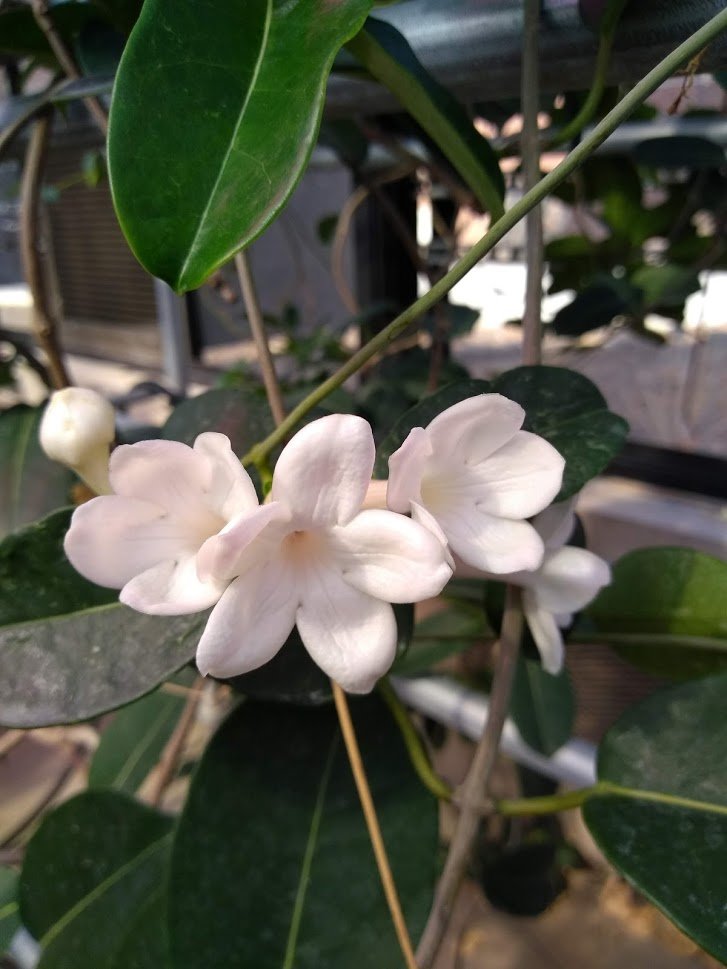
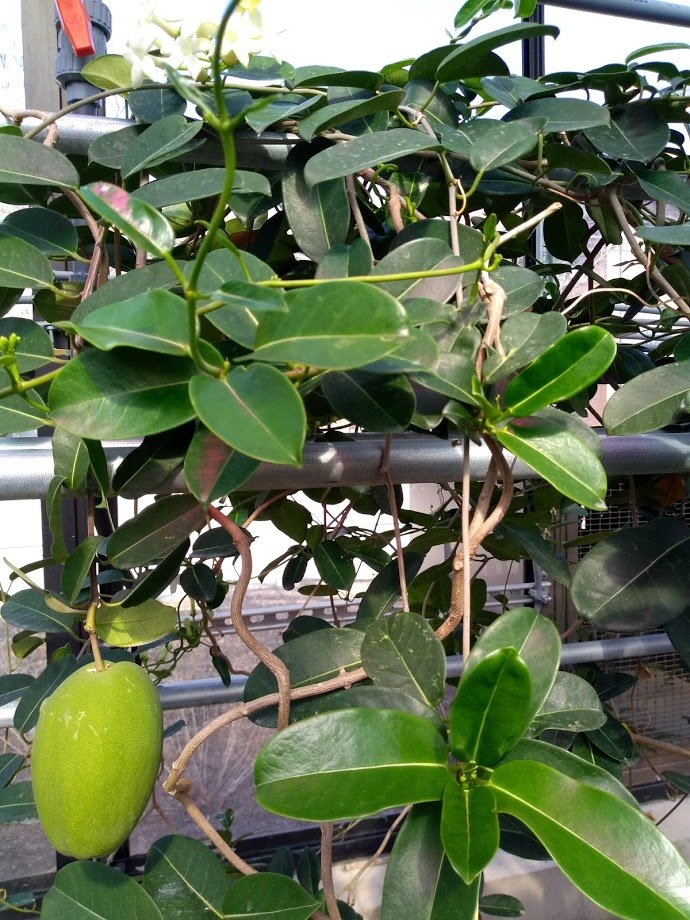
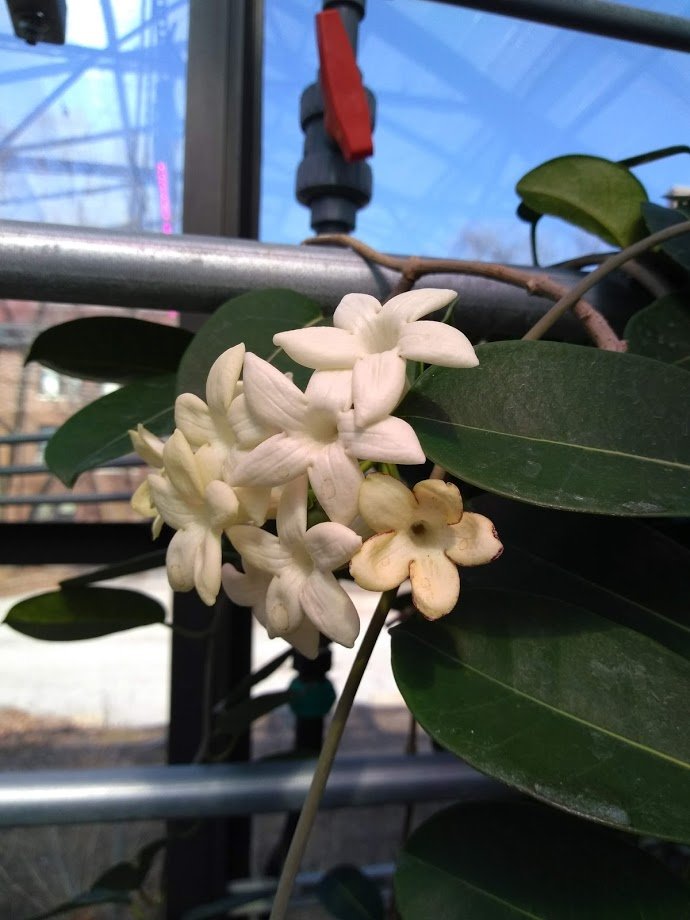
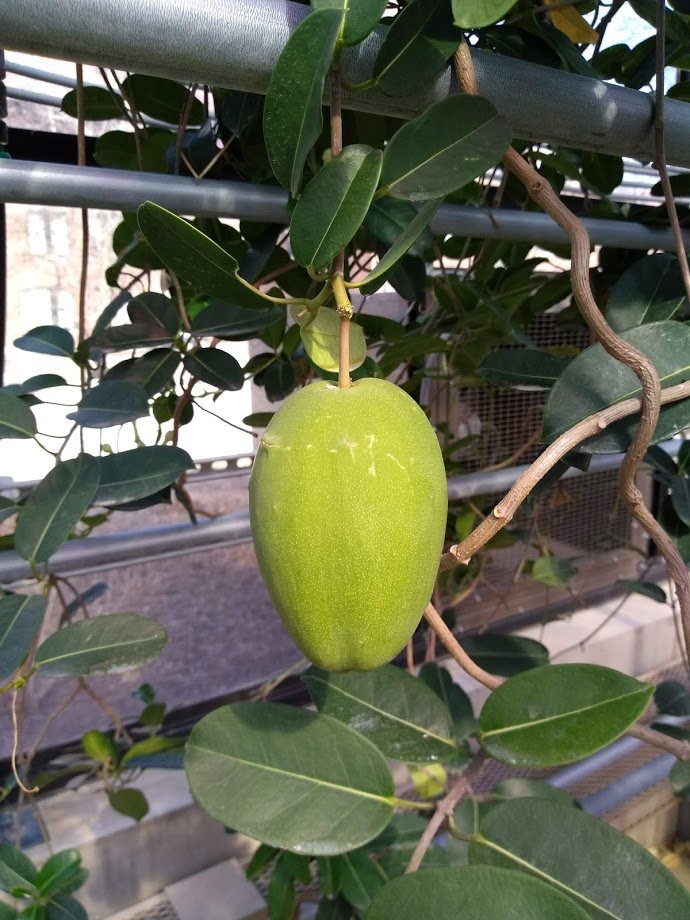
The leaves are evergreen, oval, glossy and leathery. The fruit (seed pod) resembles a mango and can reach about 4 inches in length. Initially green, the pod becomes brown with age and then splits open (not shown) releasing seeds with silky 'parachutes' (not shown, but illustrated in (1)). The plant is a woody climber that can grow to about 20 feet in height; the specimen illustrated here is about 8 feet in height.
The intense fragrance of the flowers results from the emission of methylbenzoate and methylsalicylate, which are produced by the flowers via methylation of the carboxyl groups of benzoic acid and salicylic acid, respectively (3).
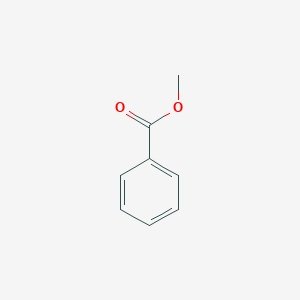
Structure of methylbenzoate (Image Source:)
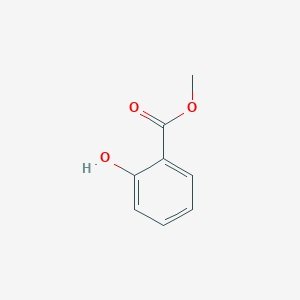
Structure of methylsalicylate (Image Source:)
Both methylbenzoate and methylsalicylate synthesis by Stephanotis floribunda flowers is catalyzed by a salicylic acid carboxy methyltransferase (SAMT) using S-adenosylmethionine as methyl donor (2). This enzyme is capable of using either benzoic acid or salicylic acid as substrate (3,4,5). Synthesis and emission of these fragrant molecules occurs predominantly at night to attract nocturnal pollinators (5).